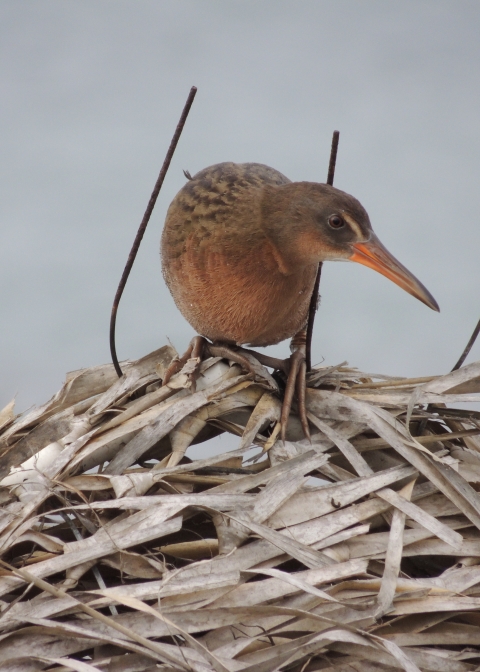Seasons of Wildlife
Download the Seal Beach NWR Bird List Brochure
Year Round
View one of the last remnants of undisturbed native coastal salt marsh salt marsh
Salt marshes are found in tidal areas near the coast, where freshwater mixes with saltwater.
Learn more about salt marsh habitat! Enjoy our three-acre California native plant garden and view some of the critters that call the Refuge home. Seal Beach NWR calls itself home to the federally endangered Light-footed Ridgway’s rail, California least tern, Eastern Pacific green sea turtle, and hosts the second largest population of the state endangered Belding’s Savannah sparrows. Ospreys, peregrine falcons, red-tailed hawks, great-blue herons, great egrets, snowy egrets, brown pelicans, crabs, and snails can also be seen throughout the year.
Winter Migration
From October to January, enjoy viewing a spectacular number of shorebirds and waterfowl feeding and resting on the Refuge during the fall and winter migration. Some of these birds simply stop here along their long journeys southward while for others, Seal Beach NWR is the terminus of their migration. View Canada, snow, and Ross’s geese, various ducks, black-necked stilt, American avocet, black-bellied plover, least and western sandpipers and more!
Spring Wildflowers
From February to April, enjoy our native plant garden in bloom. Many of the native California wildflowers and shrubs are in full bloom this time of year from the fall and winter rains.
Summer Animals
From June to October, special visitors frequent the refuge. While there is no guarantee, many people have a good chance of seeing small rays and sharks in the protected waters of the Refuge during the summer and fall months after the water has warmed. Past observations include smooth greyhound sharks, leopard sharks, round stingrays, and even a bat ray.
Featured Species
Seal Beach National Wildlife Refuge works closely to support and protect federally and State listed threatened and endangered species and species of concern that are found on the refuge. These include the third-largest population of federally endangered Light-footed Ridgway’s rail, the California least tern, and the East Pacific green turtle that have been observed in the 7th Street Pond, as well as the channel that extends from Anaheim Bay into the 7th Street Pond.





